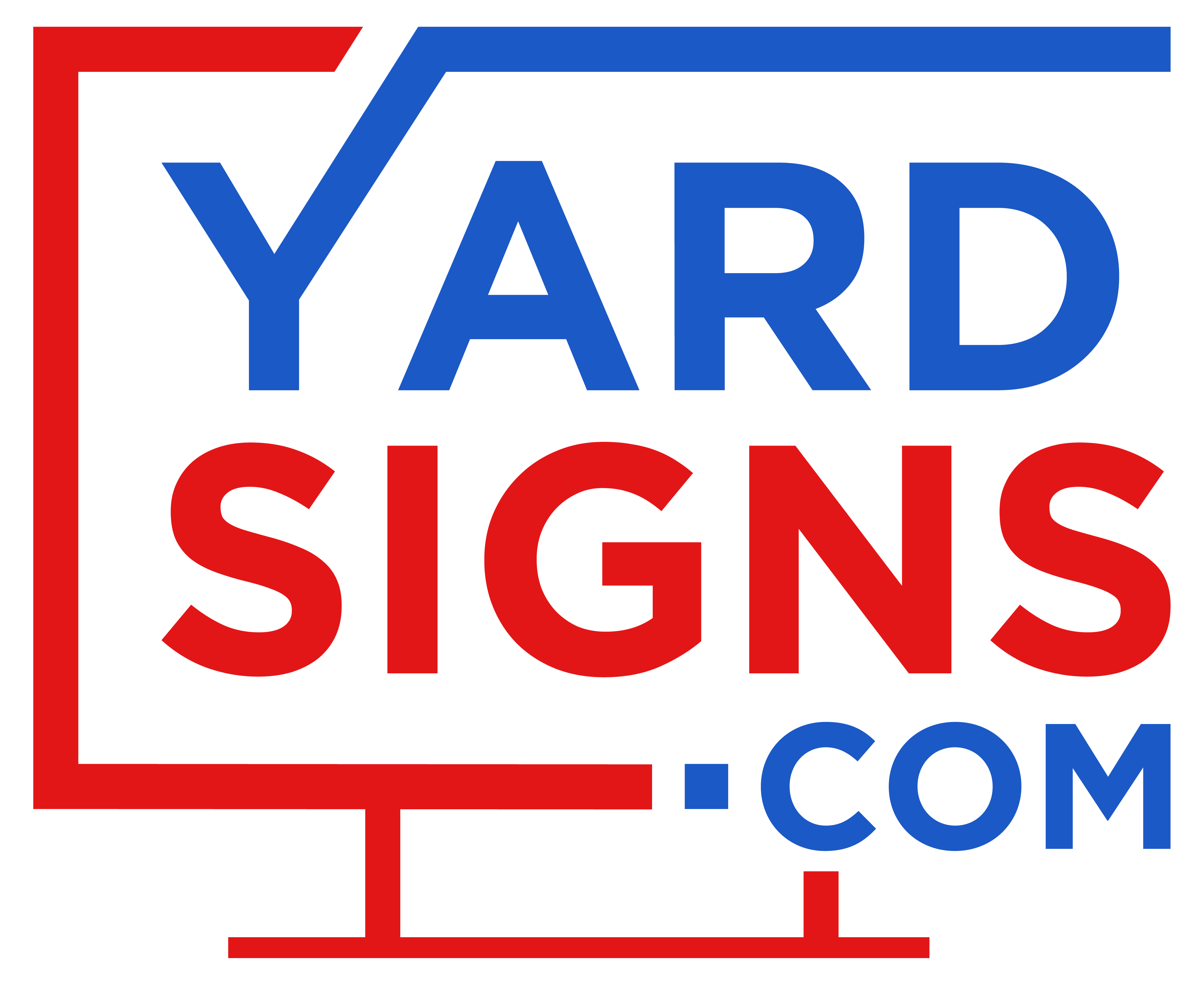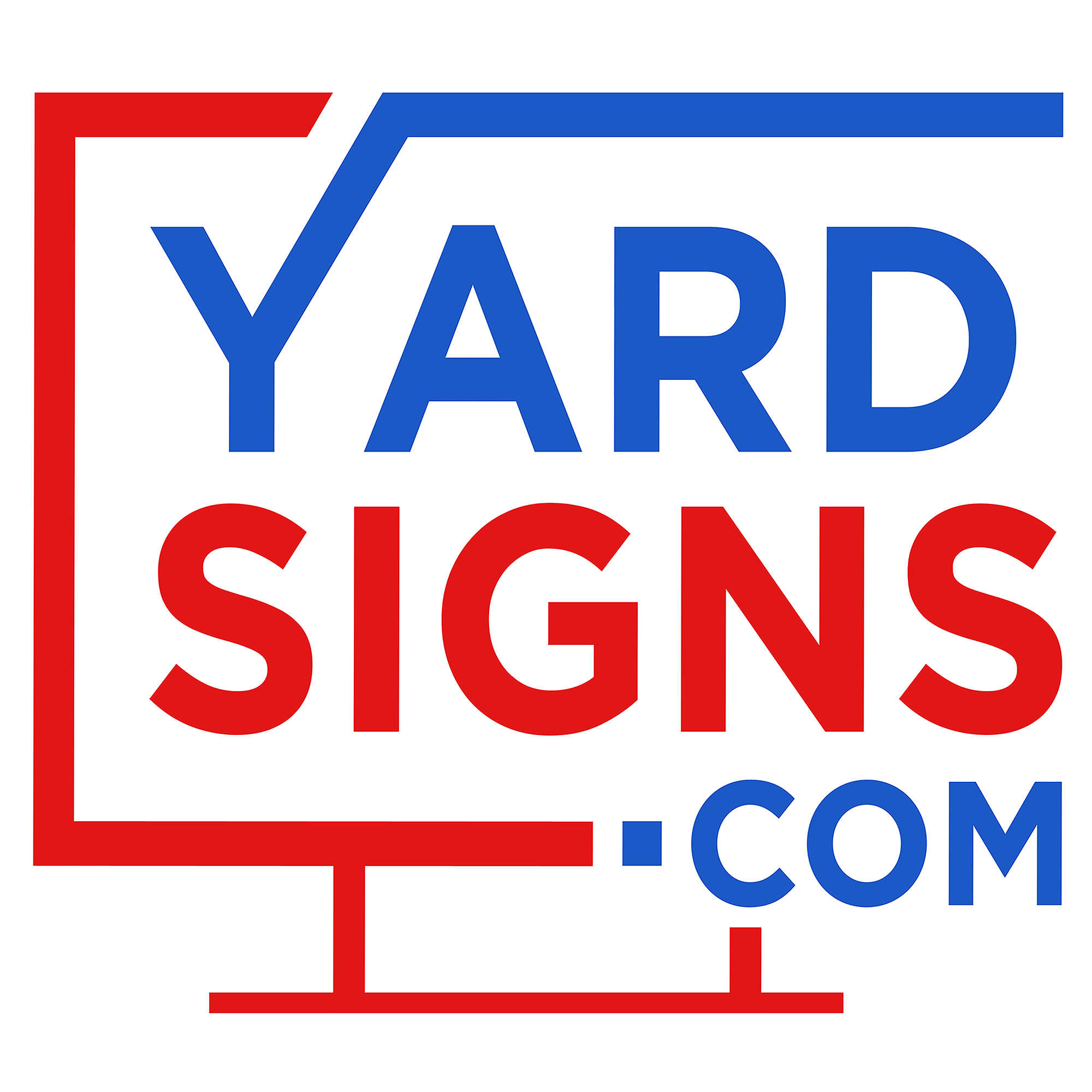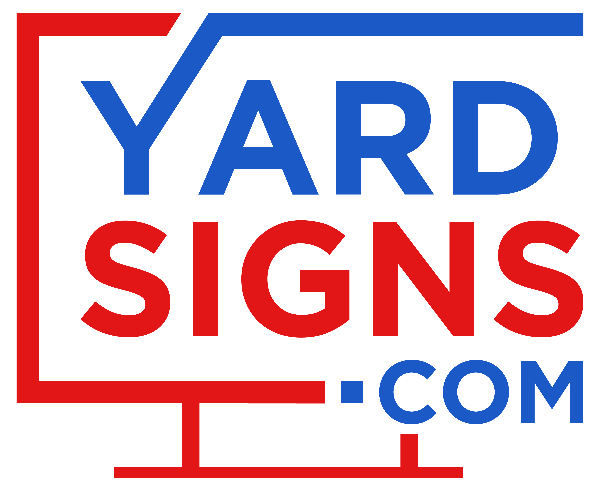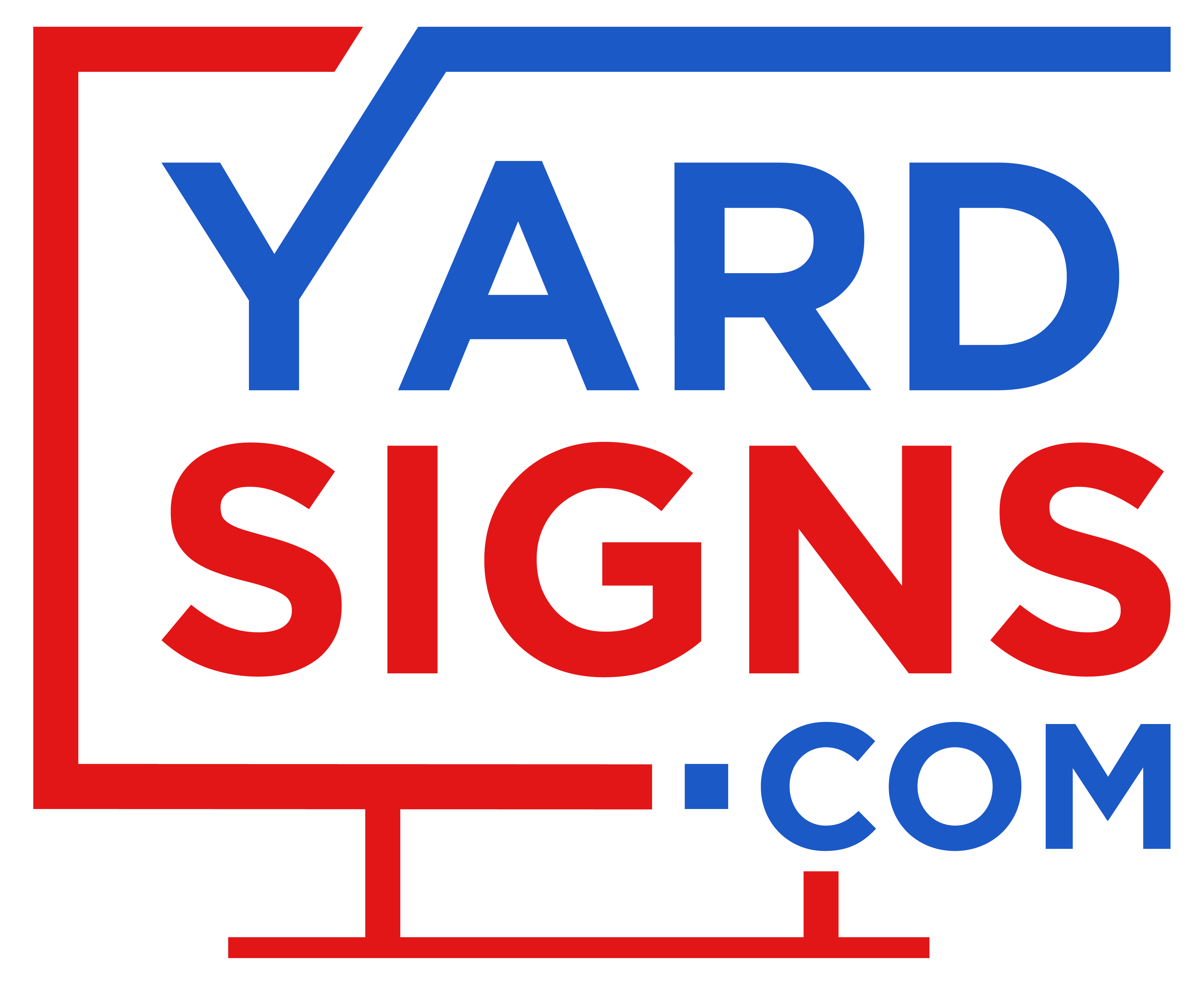In 2025, businesses and local organizations continue to explore how different forms of advertising perform in today's media landscape. While digital platforms have grown, traditional methods like yard signs are still widely used.
Many advertisers ask the same question—are yard signs still good advertising? To answer that, recent research has evaluated how yard signs function in local marketing today.
This article breaks down the role yard signs play in modern advertising and how their effectiveness compares to other options. Each section looks at a different aspect of yard sign marketing, from design to placement to return on investment.
Are Yard Signs Still Effective in Local Advertising
Yes, yard signs remain effective advertising tools in 2025, especially for local marketing. Current data shows yard signs deliver strong results for small businesses, real estate agents, and community organizations when used correctly.
Yard signs work because they create physical visibility in places where people live and travel daily. Unlike digital ads that require screen time, lawn signs reach people during their regular routines. This gives advertisement yard signs a unique advantage in local communities.
The effectiveness of yard signs comes from three main factors:
- Local targeting: Signs reach people in specific geographic areas
- Repeated exposure: The same people see the message multiple times
- Cost efficiency: One-time purchase continues working for weeks
Marketing yard signs perform particularly well for businesses serving specific neighborhoods or communities. A sign placed in a high-traffic area can generate hundreds of impressions daily without additional costs after the initial purchase.
Why Yard Signs Continue to Deliver ROI?
Yard signs provide good return on investment (ROI) because they combine low cost with continuous visibility. A single yard sign costs between $15-30 but can generate thousands of impressions over its lifespan.
Cost Vs Exposure
When comparing advertising methods, yard signs offer one of the lowest costs per impression:
|
Advertising Method |
Average Cost per 1,000 Impressions |
Duration |
|
Yard Signs |
$0.25 - $1.00 |
30–90 days |
|
Digital Ads |
$2.50 - $6.00 |
Campaign length |
|
Print Ads |
$5.00 - $20.00 |
1–2 days |
The one-time purchase of a yard sign continues working without subscription fees or renewal costs. This makes lawn sign marketing particularly valuable for small businesses with limited advertising budgets.
Repetition and Visibility
Marketing research shows people typically need to see a message 5-7 times before taking action. Yard signs excel at creating this repetition because they remain in place 24 hours a day.
People who travel the same routes regularly—like during daily commutes—will see the same signs repeatedly. This consistent exposure helps build recognition and recall of the business or message.

Signs placed in busy areas can reach different audiences throughout the day:
- Morning commuters
- Midday shoppers and errand-runners
- Evening travelers returning home
This continuous visibility helps yard signs complement digital marketing efforts by reinforcing messages in the physical world.
Community Trust
Physical presence in a neighborhood creates a sense of legitimacy that purely online businesses may lack. When people see a business represented in their community, it often feels more established and trustworthy.
Local businesses benefit from this community connection. A yard sign showing that a contractor is working in the neighborhood signals that others in the community trust this business enough to hire them.
Best Uses for Yard Sign Marketing
Some industries and purposes get particularly good results from yard sign advertising. Understanding these common applications helps determine if yard signs might work for your specific needs.
Real Estate Listings
Real estate agents continue to use yard signs as a core marketing tool despite the growth of online listings. According to the National Association of Realtors, approximately 7% of homebuyers first discovered the home they purchased through a yard sign.

Real estate signs work because:
- They mark the exact location of available properties
- They catch the attention of people already interested in the neighborhood
- They provide immediate contact information for interested buyers
Effective real estate signs include the agent's name, phone number, and often a website or QR code for more information.
Political Campaigns
Political yard signs remain a standard feature of election seasons. These signs build name recognition and show community support for candidates or ballot measures.
Political signs typically feature:
- Candidate name in large, bold text
- Office being sought
- Campaign colors and logo
- Simple slogan (optional)
These signs work best when concentrated in high-visibility areas and neighborhoods with active voters.
Local Services and Contractors
Service businesses like landscapers, painters, roofers, and pressure washing companies often place signs at properties where they're currently working. This approach uses the concept of "social proof"—showing that others in the neighborhood trust and use the service.
Contractors typically ask homeowners for permission to place a sign after completing work. The signs usually remain for a few days to a week, creating visibility among neighbors who might need similar services.
Community Events and Celebrations
Local events use yard signs to build awareness in the weeks leading up to the date. These signs work well for:
- School fundraisers
- Community festivals
- Church events
- Sporting tournaments
- Neighborhood garage sales
Event signs typically include the event name, date, location, and sometimes a website for more information.
Design and Placement Tips for Increased Visibility
The effectiveness of yard signs depends largely on design and placement. Following these guidelines helps maximize the impact of lawn sign marketing.
Keep Text Short
Most people viewing a yard sign have only seconds to read and understand the message. Drivers passing by at 30 mph might have just 3-4 seconds of visibility.
For maximum readability:
- Limit word count: Use 5-7 words total
- Focus on essentials: Name, what you offer, how to respond
- Use large fonts: Main message should be readable from 30+ feet away
Information to include:
- Business name or event title
- Simple description (if needed)
- Call to action (phone, website, date)
Avoid cluttering the sign with excessive details that make it harder to read quickly.
Use Contrasting Colors
Color choices significantly impact how easily people can read your sign from a distance. High contrast between text and background makes signs more visible.
Most effective color combinations:
- Black text on yellow background
- White text on blue background
- Red text on white background
Weather and lighting conditions affect visibility too. Dark colors may be harder to see at dusk or dawn, while very light backgrounds can appear washed out in bright sunlight.
Choose High Traffic Locations
Strategic placement dramatically increases the number of people who see your sign. The best locations include:
- Busy intersections (where legally permitted)
- Near traffic lights where cars stop
- Along commuter routes
- Near shopping centers or schools
- Corner lots in residential neighborhoods
Always check local regulations before placing signs, as many areas have restrictions on where signs can be placed and for how long.
How To Track Returns on Advertisement Yard Signs
Measuring the effectiveness of yard signs helps determine if they're providing good value. Several methods can connect yard sign visibility to customer actions.
Trackable Phone Numbers Or URLs
Using unique phone numbers or web addresses on yard signs allows businesses to count responses directly from each sign. Call tracking services assign different phone numbers to different marketing channels, then record which number receives calls.
Similarly, creating a special web address just for yard signs (like yourcompany.com/sign) helps track online visits generated by the signs. These tracking methods work without changing the sign's appearance or adding complexity.
QR Codes for Immediate Engagement

QR codes provide a direct link between physical signs and digital content. When someone scans the code with their smartphone, they immediately connect to a website, contact form, or special offer.
QR codes work well on yard signs because:
- They're quick and easy to use
- They connect physical advertising to digital information
- They allow precise tracking of engagement
The landing page connected to the QR code should be mobile-friendly and directly related to the sign's message.
Surveys Or Customer Feedback
Simply asking new customers how they heard about your business provides valuable data about which marketing channels are working. This approach works well for smaller businesses without complex tracking systems.
Questions to ask customers:
- "How did you first hear about us?"
- "Did you notice our yard sign before contacting us?"
- "What made you decide to call us today?"
This feedback helps connect customer actions to specific advertising methods and can guide future marketing decisions.
Comparing Yard Signs to Digital Ads In 2025
Both yard signs and digital advertising have distinct advantages for local marketing. Understanding these differences helps create more effective advertising strategies.
|
Factor |
Yard Signs |
Digital Ads |
|
Audience Targeting |
Geographic only |
Demographics, interests, behaviors |
|
Cost Structure |
One-time purchase |
Ongoing campaign costs |
|
Visibility Duration |
1-3 months |
Campaign length only |
|
Measurement |
Limited tracking options |
Detailed analytics |
|
Local Impact |
High in specific neighborhoods |
Broader geographic reach |
Yard signs excel at creating physical presence in specific locations. They reach everyone in an area regardless of their online habits. Digital ads offer more precise audience targeting but may miss people who spend less time online.
Many businesses find that combining both approaches works best. For example, a lawn care company might place yard signs in neighborhoods where they're currently working while running targeted digital ads to reach additional potential customers in the same zip codes.
Lawn Sign Marketing Stats You Should Know
Recent data shows yard signs continue to deliver results in 2025:
- Impression cost: Yard signs average $0.25-$1.00 per thousand impressions, compared to $2.50-$6.00 for digital display ads
- Visibility: A well-placed sign in a suburban area generates 500-2,500 impressions daily
- Recall rate: About 65% of people can remember a message after seeing it on a yard sign multiple times
- Service businesses: Approximately 1 in 5 new customers report first noticing a local service through yard signs
These figures vary based on location, design quality, and industry, but they demonstrate that yard signs remain a cost-effective advertising option for local businesses.
Making Your Message Stand Out for Tomorrow
Yard signs continue to evolve with new materials and technologies. Today's signs often include weatherproof coatings, UV-resistant inks, and reflective elements for better visibility.
Connecting physical signs with digital actions has become easier. QR codes link directly to websites or contact forms, while custom URLs and phone numbers help track responses.
For maximum effectiveness, yard signs work best as part of a coordinated marketing approach. Using consistent branding, colors, and messaging across both physical signs and digital platforms creates a unified presence that reinforces recognition.
Custom yard signs from Yardsigns provide options for design, size, and materials to support various local marketing needs. Their platform makes it easy to create signs that align with broader marketing strategies.
FAQs About Yard Sign Marketing
When is the best season to use yard signs?
Spring and summer offer the most effective conditions for yard sign campaigns due to longer daylight hours and better weather. Signs remain visible for more hours each day during these seasons, and there's less risk of damage from winter storms or heavy winds.
How do local regulations affect yard sign placement?
Most cities and homeowners' associations have specific rules about sign placement, size, and duration. These regulations often restrict signs on public property like medians or sidewalks, and may limit how long signs can remain in one location. Checking local ordinances before placing signs helps avoid potential fines or removal.
What size yard sign delivers the best results?
The standard 18×24-inch sign balances visibility with practical placement considerations for most advertising purposes. This size is large enough to be readable from passing vehicles while remaining easy to install in various locations. Larger 24×36-inch signs may be better for high-speed areas, while smaller sizes work well in pedestrian zones.
How long do quality yard signs typically last outdoors?
Standard corrugated plastic signs typically last 3-6 months in normal outdoor conditions. Factors affecting durability include material quality, weather exposure, and installation method. Signs in areas with strong winds or direct sunlight may have shorter lifespans, while those in protected locations can last longer.
How many yard signs are needed for an effective campaign?
The number depends on campaign goals and geographic coverage. Local service businesses often use 10-20 signs throughout a service area, while political campaigns might place hundreds across a district. Strategic placement in high-visibility locations often matters more than total quantity.




